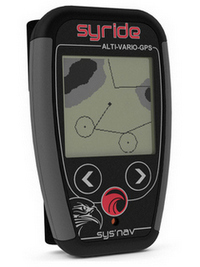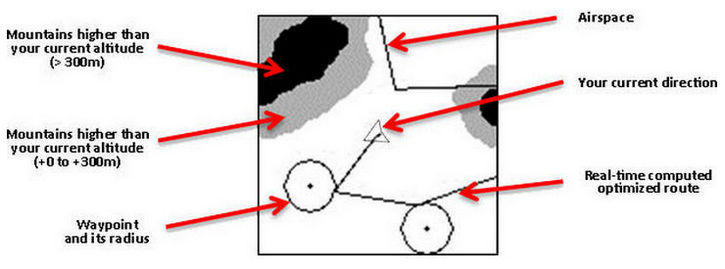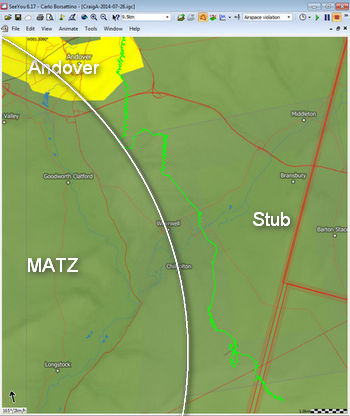
Andrew Craig tries the Syride SYS'GPS' more powerful big brother, the SYS'Nav.
After their SYS'Alti alti-vario and SYS'GPS alti-vario-GPS, Syride have come up with an even more capable box of tricks, while keeping the box the same size as the other two.

The SYS'Nav does everything the SYS'GPS does (see May Skywings for my review of the latter). Straight out of the box, you can switch it on to find a fully-featured vario and a useful basic GPS. Like the SYS'GPS, you can boost its utility by connecting it to your computer and choosing from a huge range of values to display on its screen.
But where the SYS'GPS had two user-configurable screens, the SYS'Nav has four, and they provide a lot more navigational functions (hence the name) that make the device a lightweight option as a sole cross-country instrument.
The two big leaps forward from its little brother are, first, the capacity to load waypoints and make them into a route; and secondly, the power to load airspace files for the country that you're flying in, display them on screen, and get a warning if you get close—or even inside. (Since I live in London, close to the Heathrow flight path, I heard "VIOLATION" a lot while tinkering with the SYS'Nav at my desk!)

A word of caution: this is a small instrument, and while the airspace map is very cleverly set up—a single button scrolls through four zoom levels—it can't, of course, display as much information as a big-screen device. It would suit pilots who know the relevant airspace well and fly with a paper map.

I found this out to my cost when I turned away from a circular area of airspace shown on the SYS'Nav, only to find after landing that it was the permitted part of a MATZ, not an ATZ, and my companions who'd flown on through it were not risking an RAF missile up their airbags. My fault entirely—if I'd studied the map properly, I'd have been clued up, and the SYS'Nav would have allowed me to fly right up to a few metres from the prohibited zone.
As for waypoints and routes, these functions are best used when the device is connected to a PC. Entering them manually on the instrument itself would take a while.
As with the SYS'GPS, other parameters that can be displayed include all the usual vario and GPS measurements, plus such things as wind speed and direction, height above ground, and even G measurements—not that my flying style gives much call for that one!
Both Syride devices can now provide tracks compatible with the UK XC league, as well as Leonardo and XContest. Flight tracks can also be recorded and displayed on Syride's own website. Battery life is excellent at 25 hours, while 90 hours of flight can be stored.
I've been using one or other of the Syride devices as my main vario all summer, and I'm very happy with them in that role. The SYS'Nav means that you can fly XC with all the navigational power you need in a box that fits in the palm of your hand—or, more practically, on your riser.
More: Syride SYS'Nav
